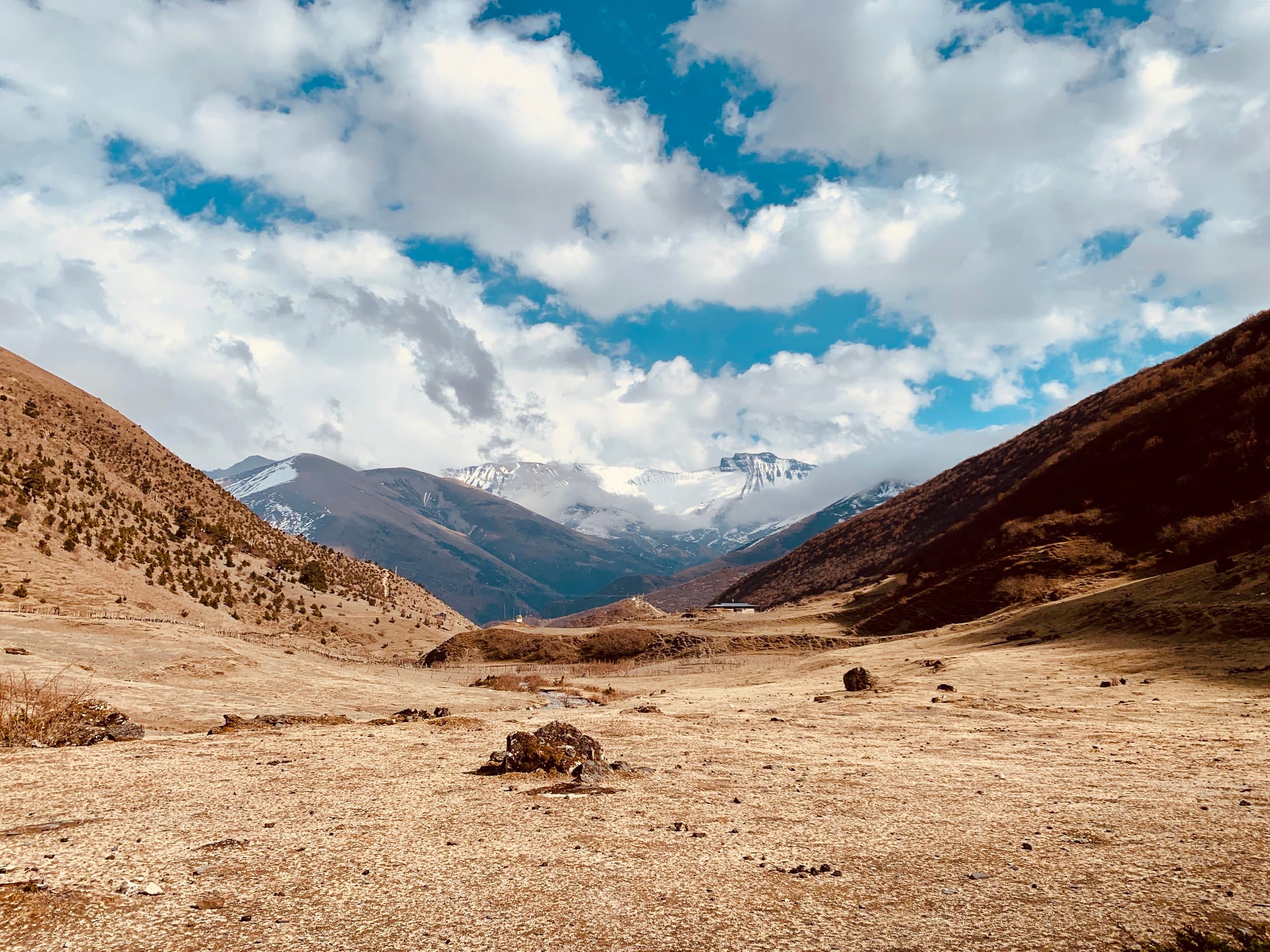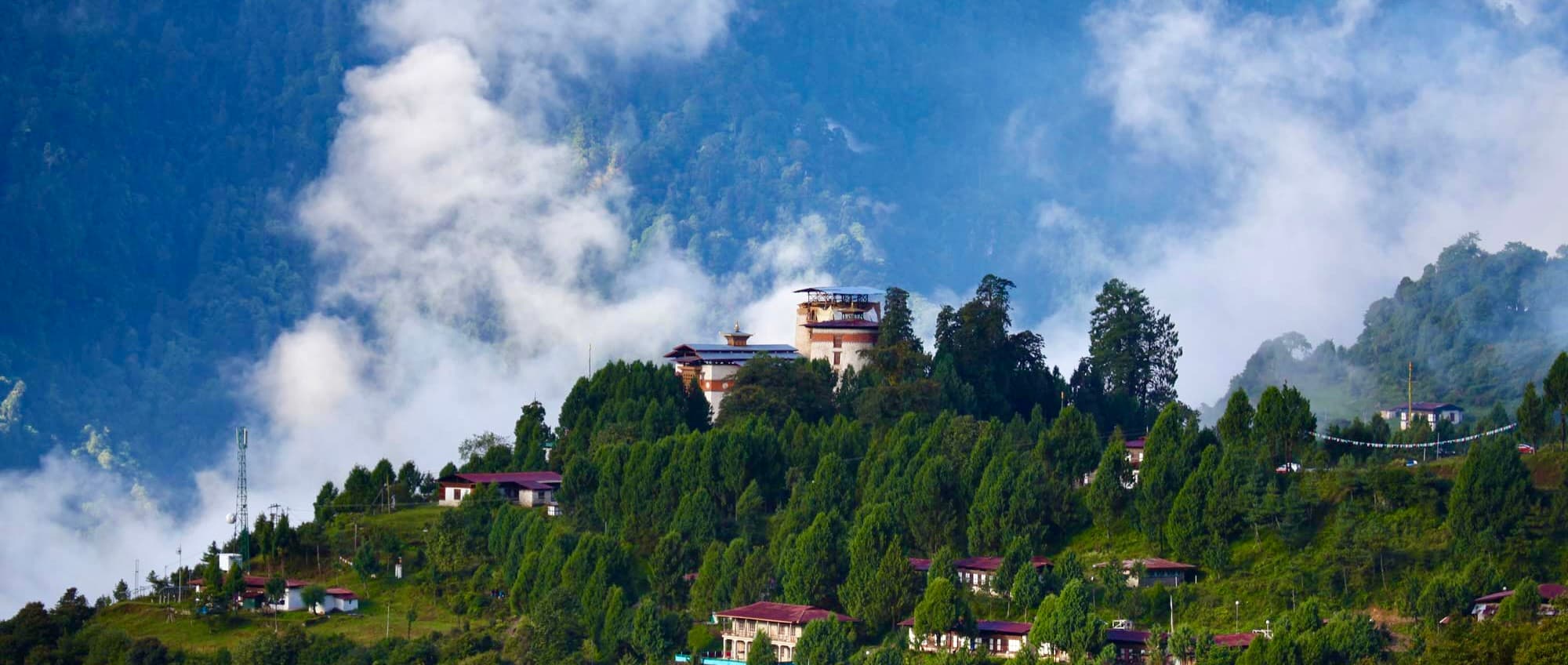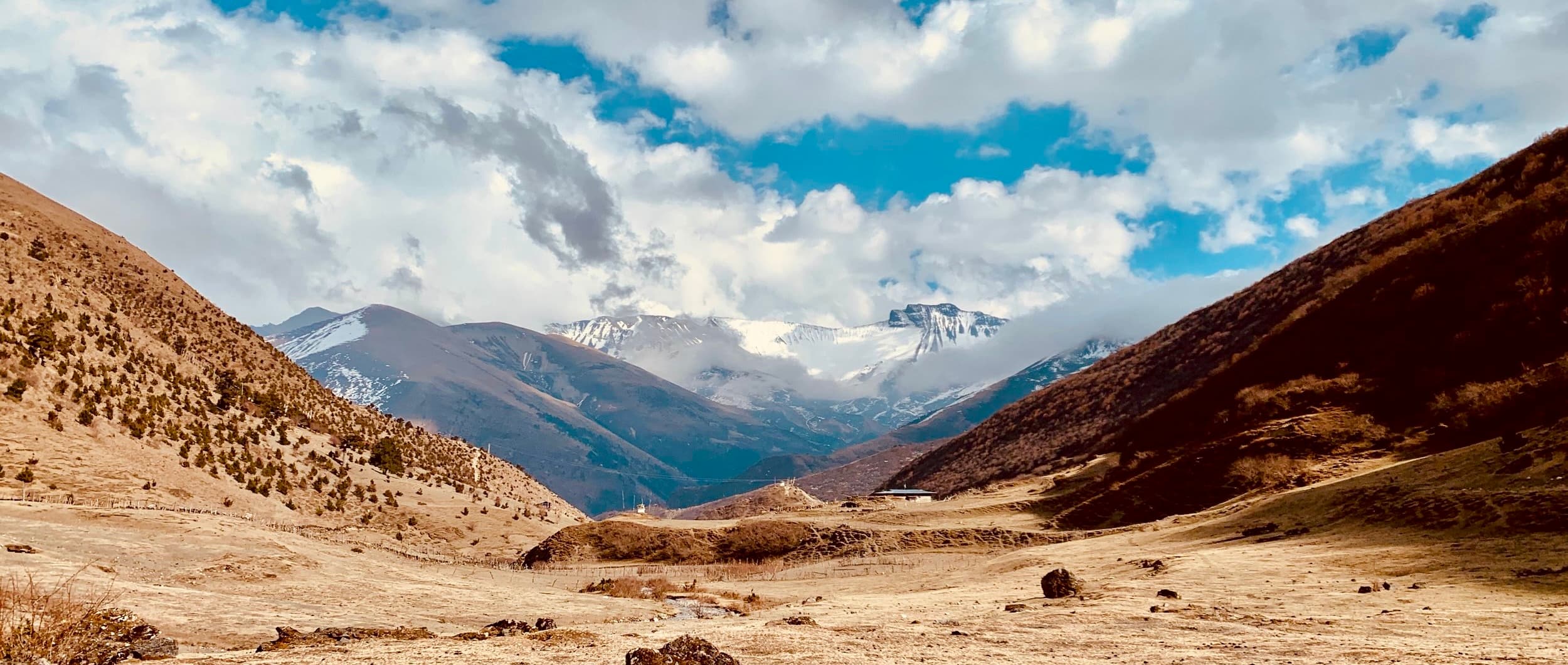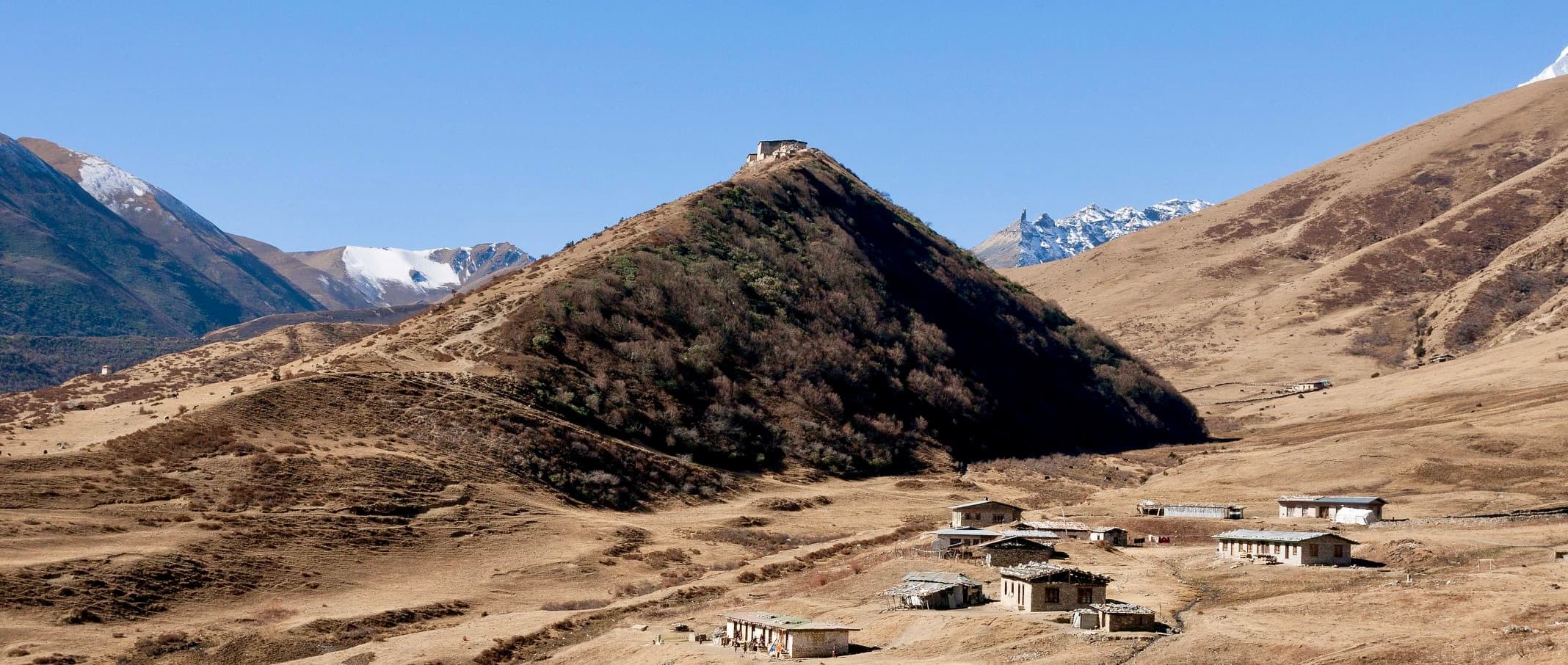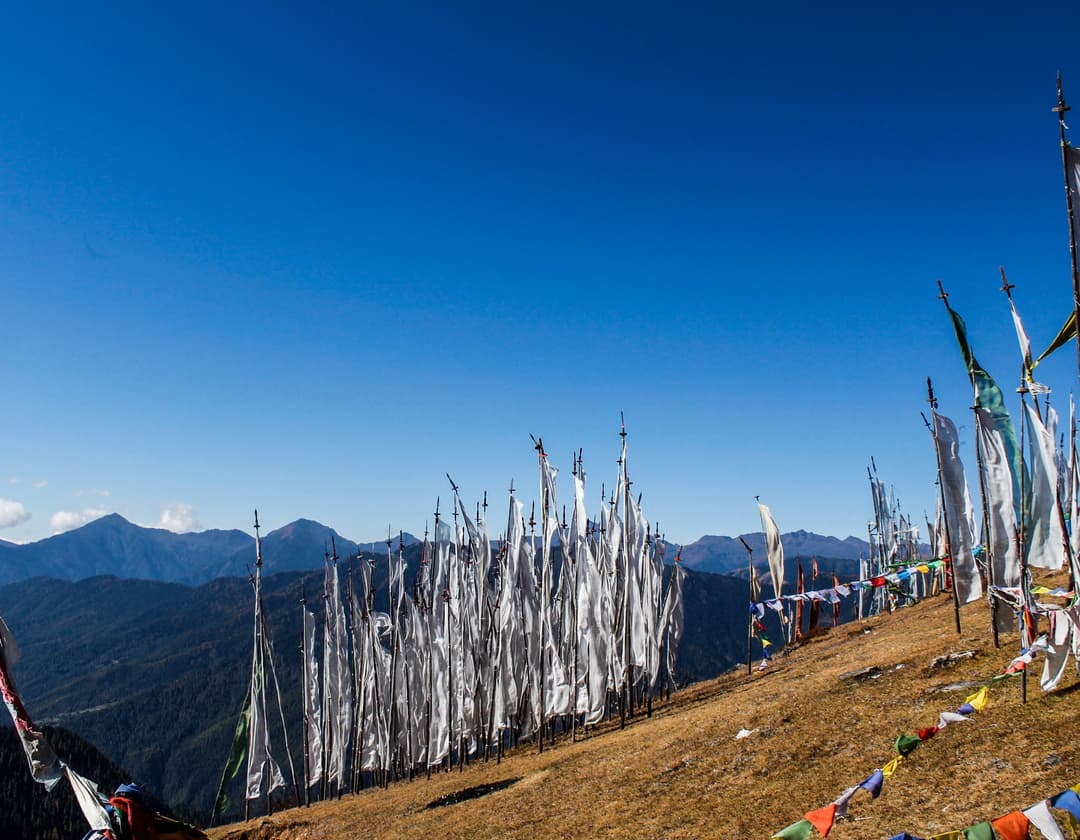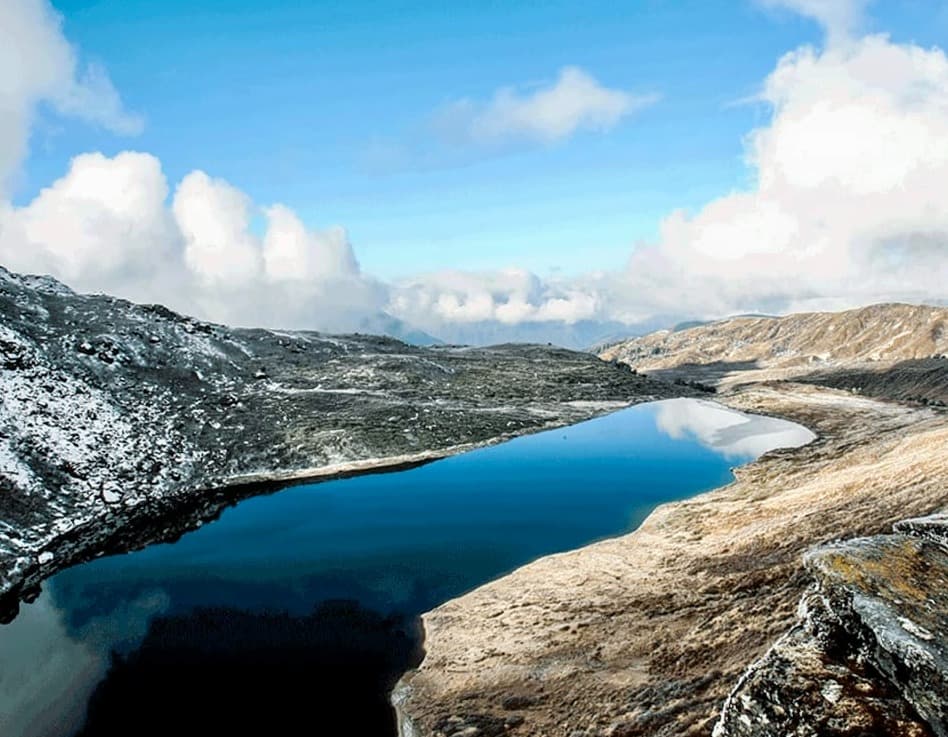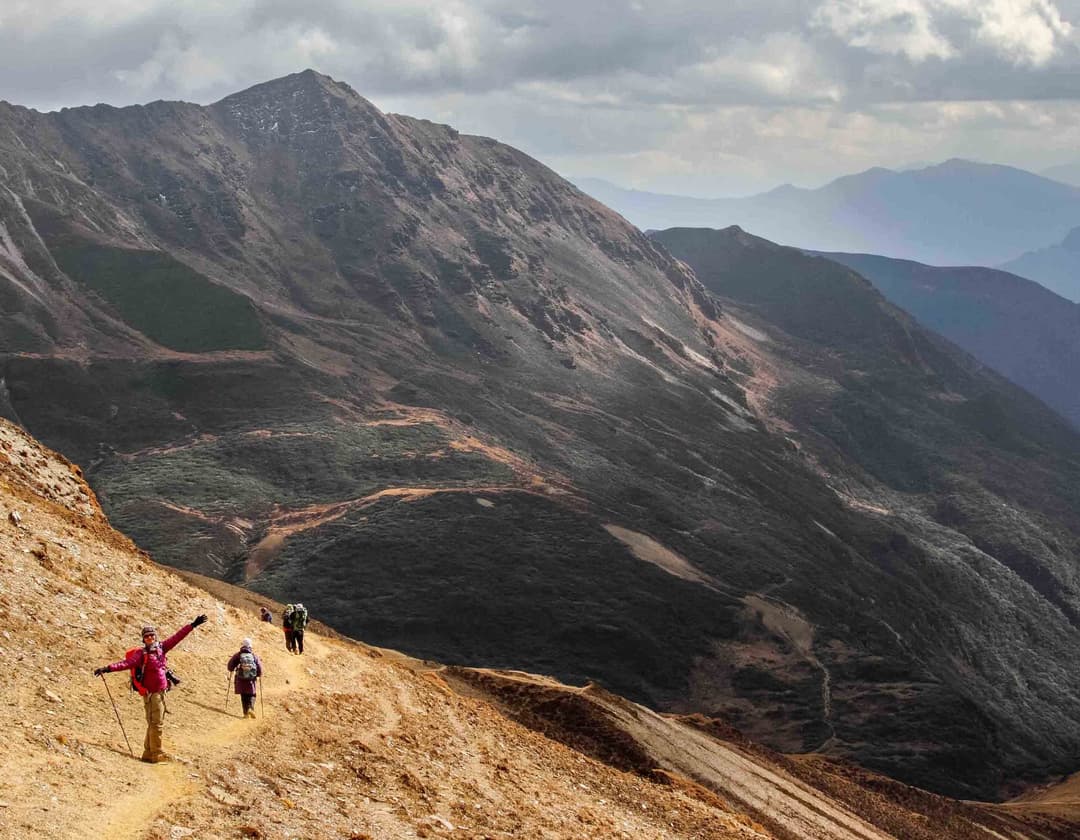Bhutan Visa for the Laya Gasa Trek
To embark on the Laya Gasa Trek in Bhutan, all international visitors (except for nationals from India, Bangladesh, and the Maldives) require a Bhutanese visa, which must be arranged prior to arrival. Here’s a guide to obtaining a Bhutan visa for your trek:
Visa Requirements
- Bhutanese visas are required for most international travelers and cannot be obtained independently. Visitors must book their trip through a tour operator such as Druk Holidays.
Tour Operator Involvement
- The visa application is typically processed by Druk Holidays. You need to provide them with a scanned copy of your passport and other required details. The passport must be valid for at least six months beyond the date of your entry into Bhutan.
Visa Approval Process
- Once you book your trip and submit the necessary information, we will handle the visa application. The Tourism Council of Bhutan (TCB) must approve all visas.
Visa Fee:
- The visa fee is USD $40, usually included in the tour package price quoted by the tour operator. This fee is paid as part of your total trip cost.
Confirmation and Entry Permit
- Upon arrival in Bhutan, you will receive a visa stamp in your passport. We will have sent you a visa clearance letter beforehand, which you must present on entry.
Minimum Daily Package
- To obtain a visa, you must also pay for a minimum daily package, which includes accommodation, food, transportation, and an official guide. This package is part of Bhutan’s sustainable tourism policy.
Duration and Extension
- The visa is typically granted for the duration of your booked trip. Extensions can be arranged through our company if you decide to stay longer.
Restricted Areas
- Some areas in Bhutan may require special permits, especially for trekking. We will arrange these on your behalf.
It’s crucial to plan well in advance, as the visa process can take time, and last-minute travel arrangements are generally not possible. By following these guidelines, you’ll ensure that your travel documents are in order for a hassle-free entry into Bhutan and a memorable trekking experience on the Laya Gasa Trek.
Altitude During the Laya Gasa Trek
The Laya Gasa Trek is a high-altitude adventure that takes you through some of the most breathtaking landscapes in Bhutan, reaching elevations that significantly vary throughout the journey. Here’s a breakdown of the altitude levels you’ll encounter during this trek:
Paro (Start/End Point)
- Altitude: Approximately 2,200 meters (7,220 feet)
- Paro serves as the starting and ending point of the trek, situated at a moderate altitude, which is good for initial acclimatization.
Taktsang Monastery (Tiger's Nest)
- Altitude: Approximately 3,120 meters (10,236 feet)
- This famous site is part of the initial acclimatization, allowing your body to adjust to higher elevations.
Sharna Zampa (Start of Actual Trek)
- Altitude: About 2,850 meters (9,350 feet)
Jangothang (Base Camp)
- Altitude: Approximately 4,080 meters (13,385 feet)
- Jangothang offers stunning views of Mt. Jomolhari and serves as a crucial acclimatization spot.
Highest Passes on the Trek
- Nyile La Pass: Approximately 4,890 meters (16,043 feet)
- Shinge La Pass: Approximately 4,970 meters (16,306 feet)
These are the highest points of the trek, offering panoramic views and challenging trekking conditions due to thin air.
Laya Village
- Altitude: Approximately 3,800 meters (12,467 feet)
- Laya is one of the remote villages along the trek, known for its unique culture and traditions.
Gasa Village
- Altitude: Approximately 2,770 meters (9,087 feet)
- Known for its hot springs, Gasa provides a soothing experience at a lower altitude compared to the rest of the trek.
Considerations for High Altitude
- The varied altitude levels require thorough acclimatization to prevent altitude sickness. It’s important to follow a gradual ascent profile and include rest days, particularly before and after crossing high passes.
- Symptoms of altitude sickness can include headaches, nausea, dizziness, and fatigue. If symptoms persist or worsen, it's critical to descend to a lower altitude and seek medical assistance.
This high-altitude trek not only challenges trekkers physically but also rewards them with some of the most spectacular scenery in the Himalayas. Proper preparation, including physical conditioning and acclimatization, is essential for a safe and enjoyable experience on the Laya Gasa Trek.
Guide and Porter Service in the Laya Gasa Trek
At Druk Holidays, we understand the importance of guide and porter services in enhancing your trekking experience on the Laya Gasa Trek. Here’s how we ensure these services contribute effectively to your adventure:
Guide Services
- Expert Guidance: Our guides are not only experts in navigation but also possess deep knowledge of the local environment, culture, and history. They are trained to provide you with insightful commentary and ensure you fully appreciate the unique aspects of Bhutan’s heritage and natural beauty.
- Safety and Security: Safety is our paramount concern. Our guides are trained in first aid and emergency response. They are equipped to handle situations that may arise in remote areas, ensuring your trek is safe and enjoyable.
- Language and Communication: Our guides are fluent in English and local dialects, facilitating seamless communication between you, local communities, and service providers.
Porter Services
- Ease of Travel: Our porters manage the heavy lifting, carrying your luggage, and trekking equipment. This allows you to trek comfortably with just a daypack, making your walk more enjoyable and focusing on the stunning vistas.
- Camp Management: In addition to carrying gear, our porters assist in setting up and breaking down camps each day, ensuring that your rest stops are as comfortable as possible.
- Supporting Local Communities: Employing local porters not only provides them with vital income but also helps in the economic development of the remote communities we visit.
Ethics and Responsibility
- Fair Treatment: Druk Holidays is committed to the fair and ethical treatment of all our staff. We ensure our guides and porters are well-paid, properly equipped, and insured against accidents.
- Environmental Responsibility: Our staff are also trained in environmental conservation practices. We strive to leave no trace on our treks, preserving the pristine nature of Bhutan’s landscapes for future visitors.
Arrangements and Regulations
- All our guides and porters are registered and licensed as per Bhutanese regulations. We handle all the necessary administrative details, ensuring that our team meets all legal requirements for guiding and porter services in Bhutan.
Customized Support
- Understanding that each trekker’s needs and capabilities are different, we tailor our guide and porter services to match your preferences and fitness levels, ensuring a personalized and supportive trekking experience.
By choosing Druk Holidays for your Laya Gasa Trek, you not only get to experience the majestic beauty of Bhutan but also enjoy the peace of mind that comes with having a professionally managed, knowledgeable, and supportive team by your side every step of the way.
Permits for the Laya Gasa Trek
When planning your Laya Gasa Trek with Druk Holidays, it's important to understand the permit requirements, as Bhutan has specific regulations to ensure both the preservation of its natural and cultural heritage and the safety of its visitors. Here’s what you need to know about obtaining the necessary permits for this trek:
Bhutan Visa
- All international tourists, except citizens of India, Bangladesh, and the Maldives, require a visa to enter Bhutan. The visa is arranged by Druk Holidays and is part of the trek package. You'll need to provide us with your passport details, and we handle the rest, including the visa application process through the Bhutanese government.
Route Permit
- Besides the entry visa, additional route permits are required for specific areas on the Laya Gasa Trek, especially when passing through protected and restricted zones. We will arrange these permits on your behalf. These are necessary to ensure that all travel within Bhutan adheres to our conservation and tourism guidelines.
Trekking Permit
- A trekking permit is essential for any organized trek in Bhutan. This permit ensures that all trekking tours are registered and conducted under the supervision of licensed and experienced guides, which is a requirement in Bhutan.
Special Area Permits
- Since the Laya Gasa Trek passes through various remote and environmentally sensitive areas, special area permits are also required. These permits help manage the impact of tourism and ensure that all activities are in line with environmental conservation efforts.
Important Notes
- Ensure your passport is valid for at least six months beyond the date of your departure from Bhutan.
- All permits must be arranged prior to arrival; there are no options to secure these once the trek has started.
- Keep a copy of your permits with you at all times during the trek, as you may need to present them at various checkpoints.
By managing all necessary permits for you, we ensure that your focus remains on enjoying the stunning landscapes and rich cultural experiences of the Laya Gasa Trek, without any administrative worries.
Meals During the Laya Gasa Trek
We recognize that nutritious and enjoyable meals are a crucial part of the trekking experience, especially on an extensive and challenging trek like the Laya Gasa Trek. Here’s how we ensure that your dining experience complements your adventure:
Meal Planning
- Local and International Cuisine: Expect a mix of Bhutanese traditional dishes and popular international foods. Sample local flavors with dishes like Ema Datshi (spicy chili and cheese stew) and Red Rice, alongside familiar staples such as pasta, rice, soups, and fresh vegetables.
Meal Times and Types
- Breakfast: Typically includes porridge, bread, eggs, and a selection of hot drinks like tea and coffee. This meal is designed to start your day with a good energy boost.
- Lunch: Often a lighter meal intended to keep you fueled without feeling too heavy as you trek. It usually includes sandwiches, salads, or cooked meals that are easy to digest.
- Dinner: A more substantial meal to replenish your energy after a day of trekking. Dinners are often a three-course affair, starting with soup, followed by a main course, and concluding with a simple dessert.
Special Dietary Needs
- Accommodations for Dietary Restrictions: We cater to various dietary requirements, whether for health, religious, or personal reasons. Please inform us in advance so we can adjust the menu accordingly.
Cooking and Hygiene
- High Standards of Hygiene: Our staff are trained in food safety and hygiene practices appropriate for remote environments. We ensure that all meals are prepared with the utmost care to avoid health issues.
- Experienced Cooks: Our team includes experienced cooks who are skilled at preparing meals in various outdoor conditions, ensuring quality and taste are maintained throughout the trek.
Snacks and Beverages
- Refreshments: Throughout the day, we provide ample snacks, including seasonal fruits, biscuits, and energy bars, to keep your energy levels consistent.
- Hydration: Clean, boiled water is supplied daily for drinking. We also provide a selection of herbal and regular teas and coffees.
Meal Settings
- Dining Tents: In more remote campsites where facilities are minimal, we set up a communal dining tent, which becomes a cozy, social environment where trekkers can gather, share experiences, and enjoy meals together.
With Druk Holidays, every meal is not just a time to eat but a moment to relax, enjoy, and share the day's adventures with fellow trekkers, all while savoring delicious dishes that reflect both the local culture and familiar tastes from home.
Transportation and Flights on the Laya Gasa Trek
For the Laya Gasa Trek with Druk Holidays, we ensure seamless transportation arrangements from your arrival in Bhutan until your departure, including internal travel and flights. Here's an overview of the transportation logistics:
International Flights to and from Bhutan
- Air Travel: Paro International Airport is the main gateway into Bhutan for international travelers. We can assist with booking flights to Paro from major cities like Bangkok, Delhi, Kolkata, Kathmandu, and Singapore. These flights offer breathtaking views of the Himalayas, including Mt. Everest, weather permitting.
- Flight Assistance: While international airfare is not included in the trek package, we help you secure your international tickets. It’s recommended to book well in advance due to limited flight options into Paro.
Airport Transfers
- Arrival and Departure: Upon arrival at Paro Airport, you will be greeted by our representative who will facilitate your transfer to your hotel. Similarly, when your trek concludes, we provide transportation back to Paro Airport for your departure.
Ground Transportation
- Private Vehicles: Throughout your stay in Bhutan, we provide private vehicles for all ground transportation as outlined in your itinerary. This includes transfers between your hotel and trek starting points, as well as any sightseeing tours.
- Comfort and Safety: Our vehicles are well-maintained and driven by experienced drivers to ensure your comfort and safety, especially when navigating mountainous roads.
During the Trek
- No Motorized Transport: Once the trek begins, the only form of transportation will be walking, as the Laya Gasa Trek trail traverses remote areas not accessible by road.
- Pack Animals: In some parts of the trek, especially in the more rugged terrains, pack animals such as horses or yaks may be used to carry supplies.
Sightseeing and Short Transfers
- Local Exploration: For any local sightseeing in Paro, Thimphu, or other towns, transportation will be arranged to take you to various cultural and historical sites.
With Druk Holidays, you can be assured of efficient and comfortable transportation arrangements that complement your trekking experience in Bhutan. Our comprehensive service aims to provide you with a hassle-free journey, allowing you to focus on enjoying the stunning landscapes and rich culture of Bhutan during your Laya Gasa Trek.
Currencies Accepted During the Laya Gasa Trek
During the Laya Gasa Trek with Druk Holidays, understanding the currency and payment methods accepted in Bhutan is essential for a smooth travel experience. Here are the key details regarding currency usage throughout your trek:
Local Currency
- The official currency of Bhutan is the Ngultrum (BTN). The Ngultrum is pegged to the Indian Rupee, which is also accepted throughout Bhutan at par. However, it’s important to note that INR denominations of 2000 are often not accepted.
Currency Exchange
- It is advisable to exchange some of your money into Ngultrum upon arrival at Paro International Airport or in major towns like Paro and Thimphu. Currency exchange services are available at airports, banks, and major hotels. The exchange rates are government-regulated and consistent across all official exchange points.
Use of Foreign Currencies
- USD, Euros, and other major currencies are sometimes accepted, particularly at major hotels and tourist-oriented businesses. However, it's more common and generally easier to use Ngultrum for everyday transactions, especially in remote areas like those encountered on the Laya Gasa Trek.
Credit Cards and ATMs
- Credit cards (mainly Visa and MasterCard) are accepted at larger hotels, restaurants, and some shops, but their usage may be limited once you leave urban areas for the trek. It's advisable to carry sufficient cash because ATMs are not available in remote areas and smaller towns.
- Before departing for more isolated sections of the trek, ensure you have enough cash in local currency, as you won’t find facilities to accept credit cards or foreign currency.
Budgeting Tips
- Most of your major expenses, such as accommodation, transport, and meals, will be covered under your trek package with Druk Holidays. However, it’s wise to budget for personal expenses, gifts, and additional beverages or special meals not included in the package.
By preparing adequately with the appropriate currencies and understanding where and how different payment methods can be used, you can ensure a more focused and enjoyable trekking experience, free from the hassles of financial constraints. Druk Holidays is here to assist with any further questions you might have about currency needs during your Laya Gasa Trek.
Internet and Phone Access on the Laya Gasa Trek
When embarking on the Laya Gasa Trek with Druk Holidays, it's important to be aware of the availability of internet and phone access, as connectivity can vary significantly across different regions of Bhutan. Here’s what you should know about staying connected during your trek:
Mobile Network Coverage
- Limited Reach: Coverage is generally good in towns like Paro and Thimphu. However, as you venture into more remote areas along the Laya Gasa Trek, mobile network coverage becomes sparse or non-existent. In some villages and higher altitudes, you may find no signal at all.
- Preferred Networks: B-Mobile and TashiCell are the two main telecom providers in Bhutan. Both offer prepaid services that can be used within the country, and it’s recommended to have a local SIM card for better coverage and rates.
Internet Access
- Urban Areas: In larger towns, internet access is relatively reliable. Hotels, cafes, and some restaurants may offer Wi-Fi.
- Remote Areas: Once on the trek, consistent internet access is unlikely. Some lodges and guesthouses in larger villages may have internet facilities, but the speed and reliability can be very limited.
Satellite Phones
- For Emergency Use: Given the unreliable mobile network in many parts of the trek, carrying a satellite phone might be considered for emergency situations, especially for groups. Druk Holidays can arrange for satellite phones upon request.
Preparing for Limited Connectivity
- Download Maps and Information: Before departing, download offline maps and any necessary information you might need during the trek.
- Inform Important Contacts: Let family and friends know of your plans and the possibility of limited communication while you are trekking.
Wi-Fi Services
- Availability: In Thimphu and Paro, where you might start and end your trek, Wi-Fi is commonly available in hotels and some public areas. Use these locations to complete any urgent communications or updates.
Tips for Communication
- Battery Packs: Bring portable battery packs or solar chargers to keep your devices charged, as electricity may also be limited in remote areas.
- Cultural Sensitivity: Always ask for permission before taking photos of people or certain cultural sites, especially when you are able to connect and share images or experiences online.
With Druk Holidays, we ensure you are well informed about the connectivity scenarios you will encounter during your Laya Gasa Trek. Preparing for limited internet and phone access is crucial, allowing you to enjoy the natural beauty and cultural richness of Bhutan without unnecessary distractions.
Travel Insurance for the Laya Gasa Trek
Securing appropriate travel insurance is essential for the Laya Gasa Trek, especially given the trek’s remote nature and the physical demands involved. Druk Holidays strongly recommends that all trekkers obtain comprehensive travel insurance that covers the specific challenges and conditions of high-altitude trekking. Here are key aspects you should consider when choosing travel insurance for this adventure:
High Altitude Coverage
- Ensure that your insurance policy covers trekking up to at least 5,000 meters, as parts of the Laya Gasa Trek exceed this altitude. Some standard travel insurance policies exclude high-altitude activities, so it's crucial to confirm this detail.
Medical Coverage
- Look for policies that offer substantial medical coverage. This should include expenses for hospital stays, medical treatment, and doctor’s fees. Considering the remote locations on the trek, it’s also wise to ensure that conditions related to altitude sickness and other high-altitude ailments are covered.
Emergency Evacuation and Rescue
- Your policy should include provisions for emergency evacuation and rescue operations. This is vital in the event you need to be airlifted to a medical facility due to injury or acute mountain sickness.
Trip Cancellation and Interruption
- Choose a policy that covers trip cancellation and interruption. This can reimburse you for pre-paid, non-refundable expenses such as trek permits, hotel bookings, and flights if you have to cancel or cut your trek short due to covered reasons like illness, injury, or family emergencies.
Repatriation
- Ensure your insurance covers the cost of repatriation, which is the transport of you back to your home country for medical care or following a severe illness or injury on the trek.
Gear and Personal Belongings
- Consider a policy that also covers loss, theft, or damage to your baggage and trekking gear, which can be very valuable on such trips.
Additional Activities
- If you plan to engage in any other activities that might be considered high risk, such as horse riding or using pack animals, make sure these are also covered under your policy.
Provider Reliability
- Choose a reputable insurance provider known for reliable service in emergency situations. It's helpful to select a provider that offers 24-hour assistance for claims and inquiries, which can be invaluable when you are in a different time zone or in a remote location.
Pre-Trip Considerations
- Purchase your travel insurance soon after booking your trek to ensure that you are covered for any issues that might occur prior to your departure.
It's crucial to read the fine print of your insurance policy to understand fully what is and isn’t covered, ensuring that your adventure on the Laya Gasa Trek is as worry-free as possible.
Preparation for the Laya Gasa Trek
Preparing for the Laya Gasa Trek involves careful planning and preparation to ensure a successful and enjoyable experience. This high-altitude trek in Bhutan offers stunning landscapes and cultural insights, but it also poses physical challenges due to its duration and the altitudes reached. Here’s a detailed guide to help you prepare:
Physical Fitness
- Endurance Training: Start training several months in advance. Incorporate cardio exercises like running, cycling, or swimming into your routine to improve stamina.
- Strength Training: Focus on strengthening your legs, back, and core. Exercises like squats, lunges, and planks are beneficial.
- Hiking Practice: If possible, go on regular hikes, progressively increasing the distance and elevation to simulate the conditions of the trek.
Gear and Equipment
- Footwear: Invest in high-quality, durable, and waterproof hiking boots. Make sure they are well-broken-in to avoid blisters.
- Clothing: Prepare for variable weather conditions. Pack layers including a base layer, insulation layer, and a waterproof outer layer. Don’t forget a warm hat, gloves, and thermal underwear.
- Backpack: A comfortable backpack with good support and a rain cover is essential.
- Sleeping Bag: Choose a sleeping bag suitable for low temperatures, especially for camping in higher altitudes.
- Other Essentials: Include a headlamp, trekking poles, water purification tablets, sunscreen, lip balm, and a comprehensive first aid kit.
Acclimatization
- Plan an itinerary that allows for gradual acclimatization to high altitudes. Include days specifically for rest and acclimatization, especially before tackling higher passes.
Travel Documentation
- Ensure your passport is valid for at least six months beyond your travel date.
- Coordinate with your tour operator, such as Druk Holidays, to arrange all necessary visas and permits for Bhutan.
Travel Insurance
- Obtain comprehensive travel insurance that covers high-altitude trekking. Ensure it includes coverage for medical expenses, emergency evacuation, and trip cancellation.
Cultural Preparation
- Learn about Bhutan’s customs and traditions to enhance your experience and ensure respectful interactions. Understanding basic phrases in Dzongkha can also enrich your interactions with locals.
Nutritional Planning
- Discuss meal plans with your tour operator. Consider packing high-energy snacks like nuts, energy bars, and dried fruits to keep your energy up during long trekking days.
Mental Preparation
- Familiarize yourself with the trek’s itinerary, the daily challenges, and potential difficulties. Mental resilience is key to managing the physical demands of the trek.
Check with Health Professionals
- Visit a travel doctor for advice on vaccinations and health precautions. Discuss altitude sickness prevention and treatment options.
By addressing these areas in your preparation, you will be well-equipped to handle the challenges of the Laya Gasa Trek and fully enjoy the spectacular scenery and unique cultural experiences that Bhutan has to offer.
Trip Extensions on the Laya Gasa Trek
After completing the Laya Gasa Trek, many trekkers wish to extend their journey to explore more of Bhutan's unique offerings. Druk Holidays provides several enticing options for trip extensions that allow you to immerse yourself further into the beauty and culture of Bhutan. Here are some popular extensions to consider:
Cultural Tours in Bhutan
- Thimphu: Extend your stay with a few additional days in the capital city, Thimphu. Explore the Tashichho Dzong, National Memorial Chorten, and the vibrant local markets.
- Paro: Discover more of Paro beyond the trek. Visit the National Museum, explore more monasteries, or relax in some of the town's traditional spas.
Additional Trekking Adventures
- Bumthang Cultural Trek: This shorter trek is an excellent way to explore the central region of Bhutan, known for its ancient monasteries and beautiful landscapes.
- Chele La Nature Trek: Another relatively easy trek that offers stunning views of Mt. Jomolhari and Jichu Drake, providing a different perspective on Bhutan’s mountainous terrain.
Relaxation and Wellness
- Hot Springs: Visit the Gasa hot springs or the lesser-known hot springs in the eastern regions for a day or two of relaxation and rejuvenation.
- Wellness Retreats: Bhutan also offers several wellness and meditation retreats that focus on holistic health practices, combining traditional Bhutanese medicine, yoga, and meditation.
Exploring the East
- Trashigang and Trashiyangtse: Venture to the eastern parts of Bhutan, which are less frequented by tourists. Explore rural life, artisan villages, and secluded monasteries.
Wildlife and Nature Reserves
- Phobjikha Valley: Visit the valley in winter to witness the rare black-necked cranes. The area is also excellent for hiking and enjoying the serene landscape.
- Royal Manas National Park: Extend your trip to Bhutan’s oldest national park, known for its diverse flora and fauna. It's a fantastic spot for wildlife enthusiasts.
Festivals
- If your trek coincides with local festivals, extending your trip to participate in or observe festivals like the Paro Tshechu or Thimphu Tshechu can provide deep insights into Bhutanese culture and traditions.
Adventure Sports
- Try archery, Bhutan’s national sport, or embark on a thrilling river rafting trip on the Mo Chhu or Pho Chhu rivers.
Customized Extensions: Druk Holidays can tailor your trip extension based on your interests and the duration of your stay. Whether you’re looking for more trekking, cultural immersion, relaxation, or adventure, we can organize an extension that enhances your Bhutan experience. Just let us know what you're interested in, and we can make the necessary arrangements!
Tipping for the Laya Gasa Trek
Tipping is not a compulsory practice in Bhutan, but it is appreciated as a way to show gratitude for good service, especially during treks like the Laya Gasa Trek where guides and porters play a crucial role in enhancing the trekking experience. Here are some guidelines provided by Druk Holidays on tipping during your trek:
How Much to Tip
- Guides: A general recommendation for tipping guides is between USD 10 to USD 15 per day per guide, depending on the level of satisfaction with their service.
- Porters: For porters, a suitable tip is around USD 5 to USD 10 per day per porter.
Group Tipping
- If you are part of a group, it’s often easier and more practical to pool tips together and present them as a collective contribution to each guide and porter at the end of the trek.
When to Tip
- It’s customary to give tips on the last day of the trek. This can be done during a final gathering or after the last services are rendered.
Currency for Tipping
- While Bhutanese Ngultrum (BTN) is always appreciated, USD is also widely accepted and can be more convenient for many travelers. Ensure that the notes are in good condition.
Discretion and Respect
- Tipping should always be done discreetly and respectfully. Enclose the money in an envelope, and express your thanks when handing it over. This not only shows respect but also helps maintain the dignity of the exchange.
Adjusting Tip Amounts
- Consider the level of service, length of the trek, difficulty of the terrain, and overall performance when deciding how much to tip. If your guides and porters have gone above and beyond their duties, adjusting the tip to reflect your appreciation is a thoughtful gesture.
Other Staff
- If you feel that other staff members, such as cooks or drivers, have also contributed significantly to the quality of your trekking experience, considering a small tip for them as well is a kind gesture.
Tipping is a personal and voluntary gesture, and although not mandatory, it is a meaningful way to show appreciation for the hard work and dedication of your trek team. Druk Holidays encourages fair and considerate tipping practices, reflecting the spirit of gratitude and respect that aligns with Bhutanese cultural values.

